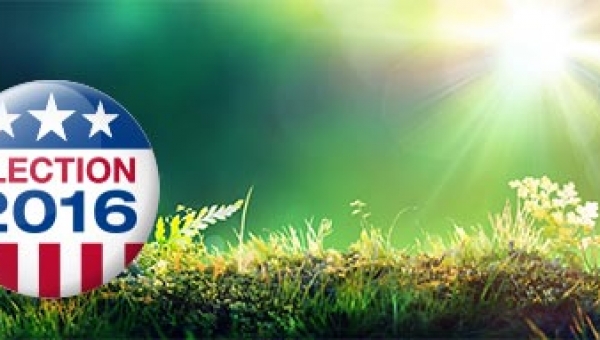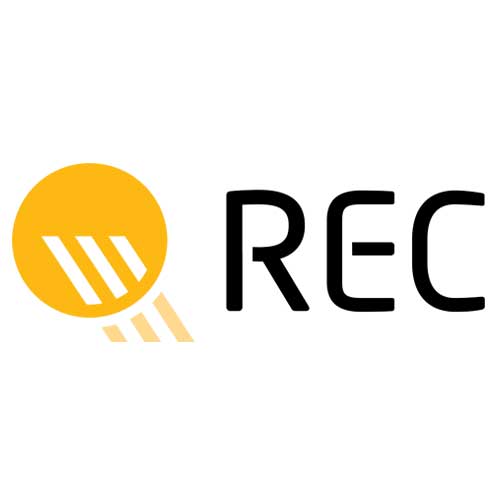
Clinton Vs. Trump on Climate Change and the Environment
325 seconds – that’s the amount of time spent talking about climate change and energy policy in the first two presidential debates. Although the environment hasn’t received much attention on the campaign trail, it’s an important issue that isn’t going away anytime soon. Environmental initiatives (or lack thereof) backed by the next President still have a chance to make a huge impact on the future of our planet.
For the most part, the 2016 presidential candidates’ positions align with the political platform of their party, which couldn’t be more different. Below we go over where Donald Trump and Hillary Clinton stand on climate change, water, conservation, and energy.
Climate Change
Hillary Clinton believes climate change is happening, saying “the science is crystal clear” on ScienceDebate. She vows to carry out the Paris global climate agreement President Obama joined and wants to steer our country to reducing greenhouse gas emissions by over 80 percent by 2050. Her goals include cutting oil consumption by one-third through cleaner fuels and more efficient vehicles, reducing energy waste in homes, schools, hospitals, and businesses by one-third, and generating enough renewable energy to power every home in the country within ten years of taking office.
“Climate change is an urgent threat and a defining challenge of our time and its impacts are already being felt at home and around the world,” says Clinton. “That’s why as President, I will work both domestically and internationally to ensure that we build on recent progress and continue to slash greenhouse gas pollution over the coming years as the science clearly tells us we must.”
In 2009, business leaders took out a full-page ad in the New York Times to urge the government to take action against climate change. Donald Trump and three of his children were among the signatories of the open letter, which read, in part, “Please don’t postpone the earth. If we fail to act now, it is scientifically irrefutable that there will be catastrophic and irreversible consequences for humanity and our planet.”
Today, Trump has changed his tune. In an interview with The Washington Post, Trump says he doesn’t believe in man-made climate change despite changing weather. A look through his Twitter feed shows Trump using individual examples of cold weather to dispel global warming and claims that climate change is a hoax. A now-deleted tweet from 2012 says that “the concept of global warming was created by and for the Chinese in order to make U.S. manufacturing non-competitive.”
If elected, Trump has promised to cancel the Paris climate agreement and stop all payments of US tax money to a United Nations fund to combat effects of climate change worldwide. He also vowed to dismantle the “Department of Environmental” because it is killing businesses. Although no “Department of Environmental” exists in our government, Trump was likely referring to the Environmental Protection Agency (EPA), which is responsible for implementing the Clean Air Act and Clean Water Act.
“I think our biggest form of climate change we should worry about is nuclear weapons. The biggest risk to the world, to me – I know President Obama thought it was climate change – to me the biggest risk is nuclear weapons. That’s – that is climate change. That is a disaster, and we don’t even know where the nuclear weapons are right now. We don’t know who has them. We don’t know who’s trying to get them. The biggest risk for this world and this country is nuclear weapons, the power of nuclear weapons,” says Trump.
Water
A 2015 Gallup poll showed that the contamination of drinking water was the environmental issue that most worries people, and the water crisis in Flint, Michigan only exacerbates those fears.
When asked about Flint earlier this year during a campaign event in Iowa, Trump said, “Well it’s a shame what’s happening in Flint, Michigan. A thing like that shouldn’t happen but, again, I don’t want to comment on that. They’ve got a very difficult problem and I know the governor’s got a very difficult time going. But, you know, I shouldn’t be commenting on Flint.”
Clinton told Rachel Maddow that she was outraged by Michigan Gov. Rick Snyder not asking for federal assistance and said she would look for a way to override him to get his constituents safe drinking water. She has pledged to form an Environmental and Climate Justice Task Force to locate and fix “the next 50 Flints” – impoverished communities most likely to face environmental risks.
In addition to polluted water sources, severe drought also plagues several areas of our nation, especially on the west coast. To improve water security and efficiency, Clinton proposes a Western Water Partnership which would help coordinate water use and invest in existing infrastructure, and a Water Innovation Lab to help utilities as well as agricultural and industrial water users discover more efficient strategies to use and reuse water.
Trump calls water “a top priority” and says “we must explore all options to include making desalinization more affordable and working to build the distribution infrastructure to bring this scarce resource to where it is needed for our citizens and those who produce the food of the world.”
Conservation
Trump calls for a “shared governance of our public lands” where state and local governments will be empowered to protect wildlife and fisheries. “Laws that tilt the scales toward special interests must be modified to balance the needs of society with the preservation of our valuable living resources,” Trump said on ScienceDebate.
Clinton aims to keep public lands public to prevent them from being sold to the highest bidder, fight animal trafficking and illegal fishing, conserve wildlife by doubling the State and Tribal Wildlife Grants program, and create “an American Parks Trust Fund to scale up and modernize how we protect and enhance” our national park system.
Energy
Clinton supports moving away from coal to renewable energy, using natural gas to transition and proposing a $30 billion plan to ensure that coal mining communities have secure healthcare, schools, and retirement plans and the land can be transformed into renewed places of economic and employment opportunity.
Continuing in Obama’s footsteps, Clinton aims to reduce greenhouse gas emissions by up to 30 percent by 2025 relative to 2005 levels. Main objectives include installing over half a billion solar panels across the U.S. by the end of her first term and generating enough clean renewable energy to power every home in America within ten years of taking office.
These goals would mean installed solar capacity would increase to 140 gigawatts by the end of 2020, the equivalent of having rooftop solar systems on over 25 million homes, representing a 700% increase from current levels. In addition, more power from solar, wind, geothermal, and other renewable sources would be added to the grid than any other decade in history.
Clinton plans to accomplish these achievements by defending and expanding on the Clean Power Plan and implementing a Clean Energy Challenge that would offer grants and other incentives to encourage states to utilize clean energy, awards for areas that allow easier access to rooftop solar, work with local communities to improve the grid, and employ programs to provide clean and affordable energy to low-income communities.
This all sounds very supportive of renewable energy, but Clinton does have a questionable history. As a junior senator, she voted to expand offshore drilling in the Gulf of Mexico. She has also flip-flopped on fracking and accepted donations and private fundraising events from the fossil fuel industry. But perhaps, the biggest concern was her inclination to approve the Keystone XL pipeline, which would have increased drilling in the Canadian tar sands and released an enormous amount of greenhouse gases. (Clinton left office before a decision was made but formally came out against it only after environmentalists made a stink. Obama rejected the proposal.)
Trump has no voting record to analyze, but has never been shy about his support for fossil fuels. Trump favors an all-of-the-above energy strategy in order to make the U.S. energy independent of other nations.
“It should be the goal of the American people and their government to achieve energy independence as soon as possible,” Trump told ScienceDebate. “Energy independence means exploring and developing every possible energy source including wind, solar, nuclear and bio-fuels. A thriving market system will allow consumers to determine the best sources of energy for future consumption.”
He plans to produce “at least a half million jobs a year, $30 billion in higher wages, and cheaper energy” by opening up $50 trillion in untapped resources including shale, oil, coal, and natural gas reserves. This will be accomplished by rolling back most of the Obama administration’s “job-destroying” environmental policies, getting rid of a moratorium on coal leasing, and drilling on public lands, off American coasts, and in the Arctic.
There are no specific plans for renewable energy detailed, but Trump does hold an investment in NextEra Energy, one of the world’s largest producers of renewable power. He told a voter in Iowa, whose husband works for a wind turbine manufacturer, that he would support subsidies for the wind industry. Trump has called solar panels “very expensive” and “a disaster,” referring to the failed solar company Solyndra that received over $500 million in government aid before filing for bankruptcy.
The presidential race is gearing up to be a close one, and it’s important to know how each candidate will address crucial environmental issues facing not only our country but our planet. Please vote on November 8th.









